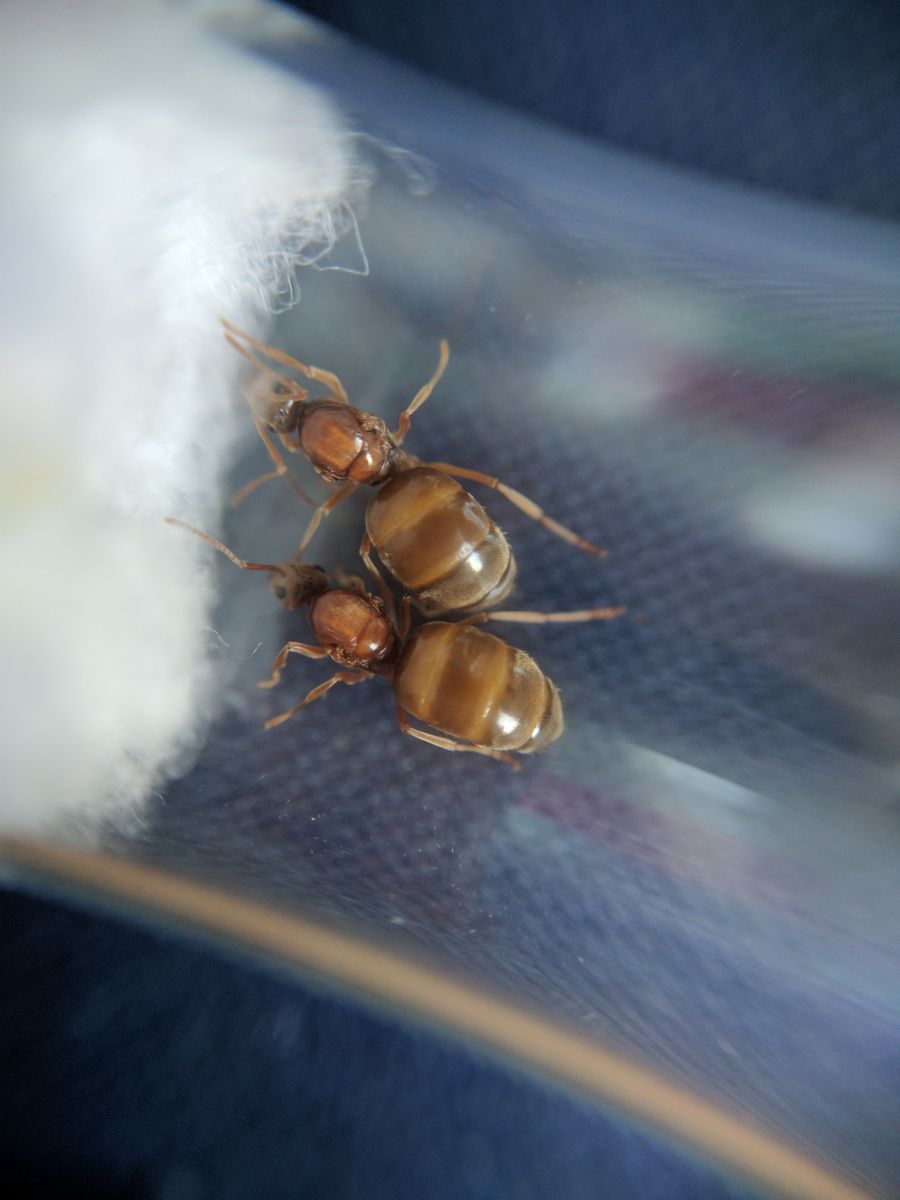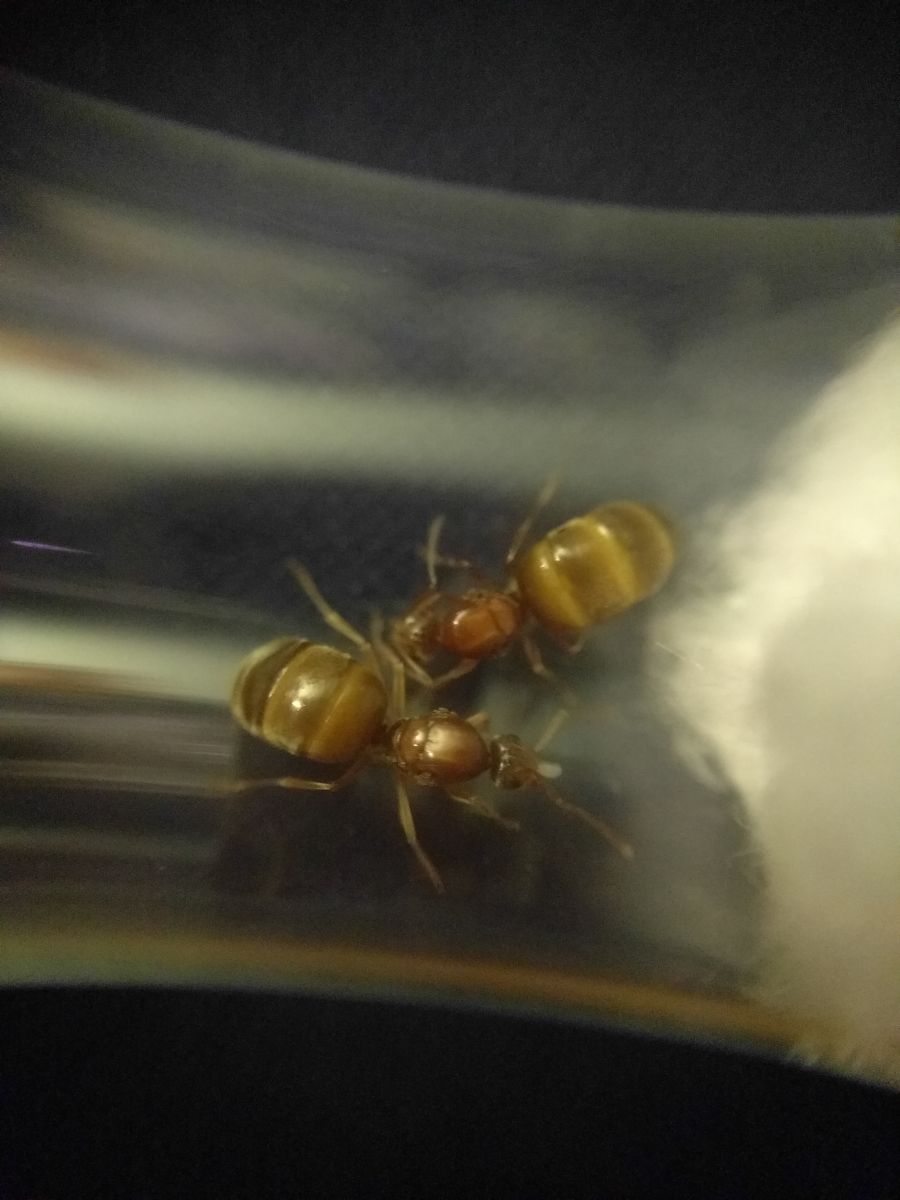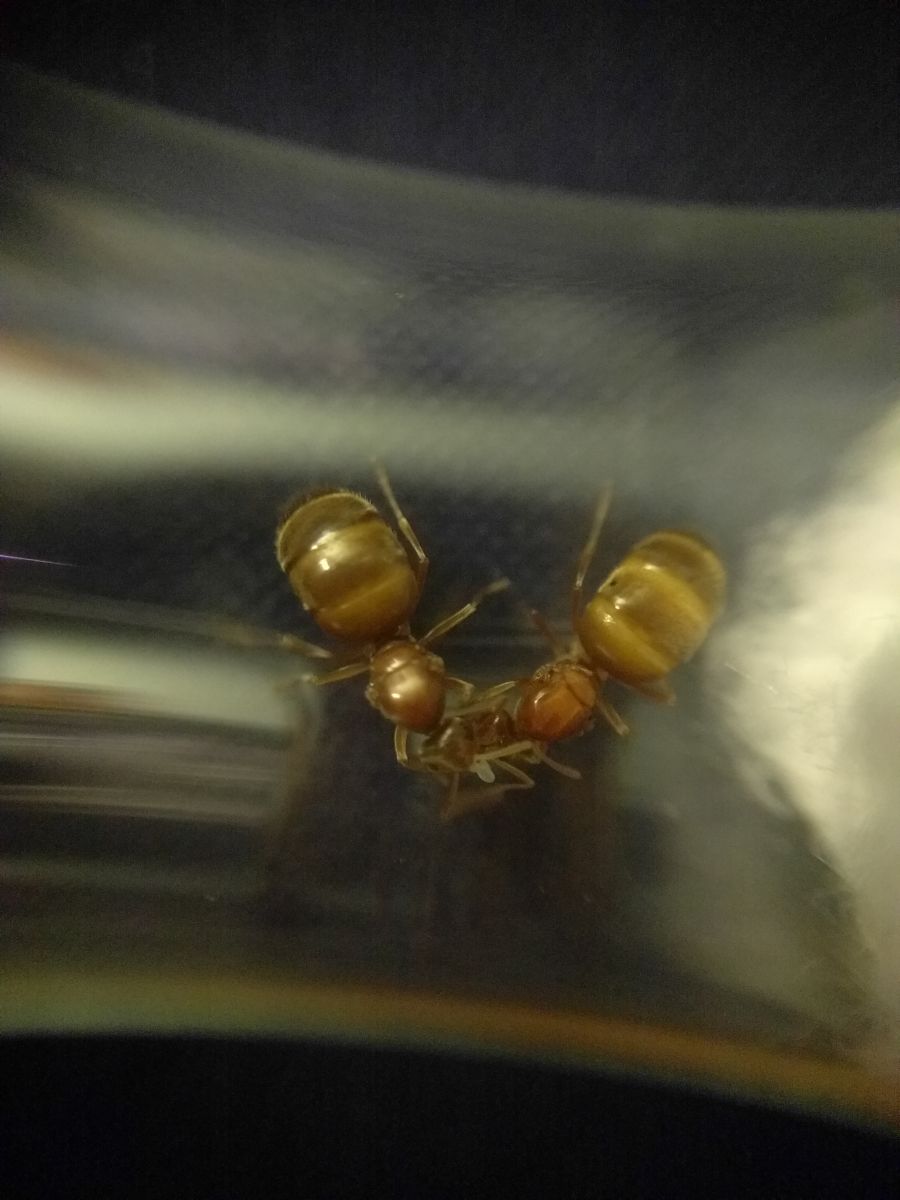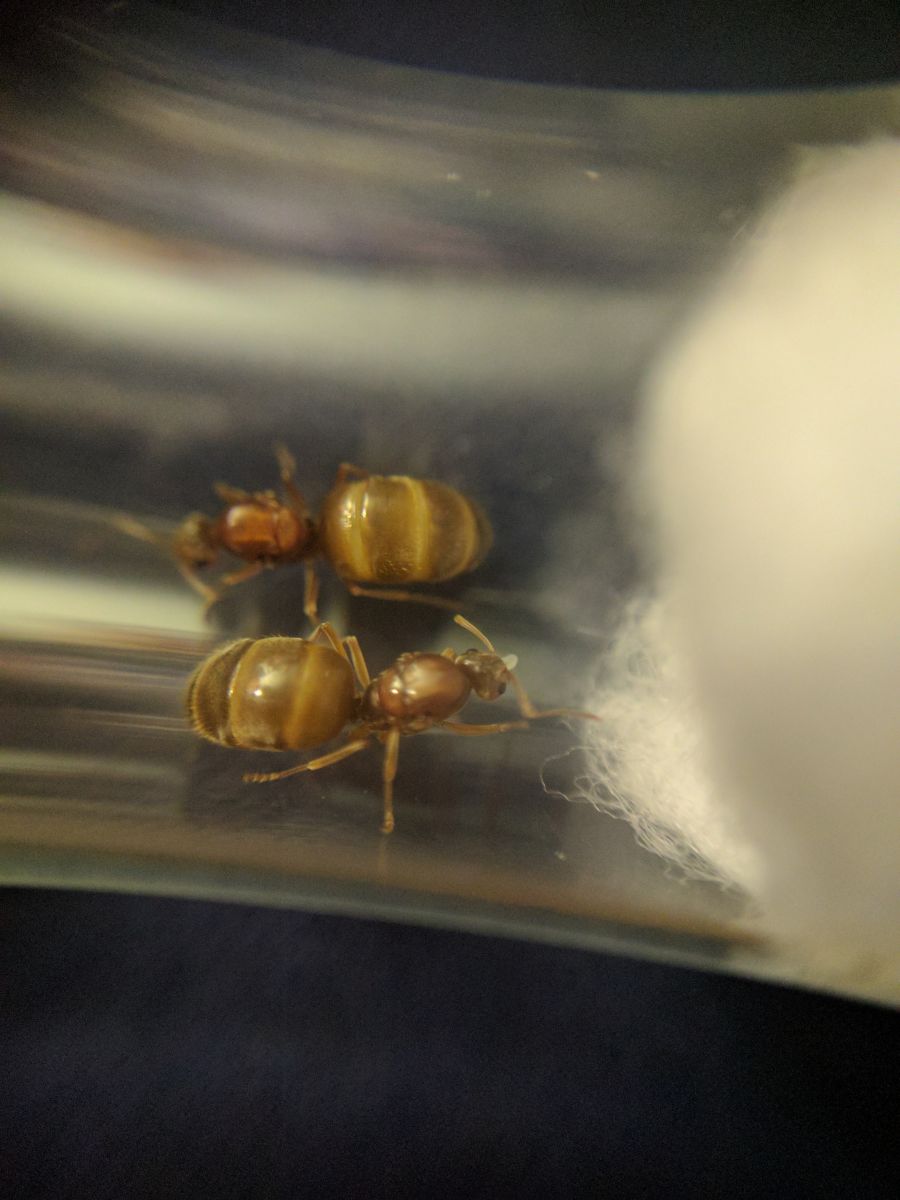Whoops- it seems I misidentified this as your Tetramorium journal. ![]() Definetly eggs.
Definetly eggs.
- Formiculture.com
- Forums
- Gallery
- Members
- Member Map
- Chat

Whoops- it seems I misidentified this as your Tetramorium journal. ![]() Definetly eggs.
Definetly eggs.
4/16/17
No eggs yet, however most of the de-alate queens have become lighter in color. I set 3 of the winged queens free (Old original, one blue and one yellow) in my backyard.

Look really really hard for eggs. They are extremely tiny for my Lasius queens, around the same size as these queens. Sometimes I can't even spot them since they are on the cotton. (white on white)
4/18/17
The queen in the THA nest has laid eggs (for real this time). The other queens haven't laid eggs yet.
Sorry for the blurry quality. It's the best I could get on the macro lens.
It's the small whitish blob that she's carrying in her mandibles. I've noticed that when a queen lays eggs it will spend a great deal of time caring and fussing over them. I noticed her hunched in the corner and not moving much last night which somewhat alarmed me- however she was actually caring for her eggs and was quite fixated on them.
Edited by Cindy, April 18 2017 - 2:21 PM.
Awesome!!! I'm resisting the urge to check on mine until the weekend so only checking on them once a week. Suspense is killing me ![]()
Awesome!!! I'm resisting the urge to check on mine until the weekend so only checking on them once a week. Suspense is killing me
So apparently the queen duo that I have in the same test tube has paired together to take care of the eggs. I try not to check too often but when I do I slide the test tube out of the foam and avoid picking it up. Here are some clear pics (managed to get closer to the test tube than I could to the Atom).



Edited by Cindy, April 18 2017 - 4:39 PM.
That's so awesome! I still haven't seen any of mine lay eggs yet and since I found out that they were polygynous I put dual queens in 3 test tubes and then separated 2 others in their own just to experiment. It's so hard not to keep looking at them. ![]()
Are you keeping them warmer or at room temp? I know they like the cold but wasn't sure if for egg laying they would prefer one over the other.
Keeper of:
Prenolepis imparis (4 founding queens)
Camponotus pennsylvanicus (5 founding queens)
Reticulitermes flavipes (3 pairs, subterranean termite)
That's so awesome! I still haven't seen any of mine lay eggs yet and since I found out that they were polygynous I put dual queens in 3 test tubes and then separated 2 others in their own just to experiment. It's so hard not to keep looking at them.
Are you keeping them warmer or at room temp? I know they like the cold but wasn't sure if for egg laying they would prefer one over the other.
I just keep them at room temp. My room temp has been down to the mid 50s at one point and they seemed to be doing fine (though their preferred temp is 64-68 F). Looking back I wish I had put more queens in the same tube because they seemed to be working better together. And it's ok, I look at them at least once daily.
Making me regret my single queen tubes too ![]() You and Randee were probably right. Wonder if too late to mix any...
You and Randee were probably right. Wonder if too late to mix any...
Edited by noebl1, April 19 2017 - 4:50 PM.
Making me regret my single queen tubes too
You and Randee were probably right. Wonder if too late to mix any...
I am wondering if it is too late as well. Last thing I want is two queens eating each other's brood. I'd rather have two successful separate colonies than a fight to the death, tbh.
Making me regret my single queen tubes too
You and Randee were probably right. Wonder if too late to mix any...
Do it!Making me regret my single queen tubes too
You and Randee were probably right. Wonder if too late to mix any...
When I check on them this weekend, I may try attaching 2 test tubes together to see if they join the same tube. That being said, I finished reading http://www.bio.fsu.e...ions/1987-3.pdf that was sent out last week and was PMing Cindy about it. It's worth a full read vs the summary that was posted last week. If I understand it correctly, Northern P. imparis were more likely monogynous, while Southern ones were more likely polygynous. There were some other interesting observations about estivation, nest shape/design, feeding and behaviour within the nest. Definitely adjusted my thinking about caring for them, and also a bunch of new questions as well.
Edited by noebl1, April 20 2017 - 5:44 AM.
That's such a great find, noebl1! Also really good to read. As an update on the experiment with mine - both single queens have officially laid eggs (I caught them 7 days ago, so it's been about a week in their test tubes). The others that are paired up are still eggless but they are habituating very well. I see them grooming themselves and pretty relaxed. Hopefully they are more like Cindy's queens and get to it but at this point I'm not sure whether I should split them up or not. Maybe I'll give it another few days?
Keeper of:
Prenolepis imparis (4 founding queens)
Camponotus pennsylvanicus (5 founding queens)
Reticulitermes flavipes (3 pairs, subterranean termite)
@Myrmidon Wish I could take credit for it, but was drtrmiller a week or two ago in a P. imparis thread who posted the pdf. I'm not so sure how many people actually read it unfortunately.
4/26/17
Today when I checked on the queen in the THA Atom she was NOT doing well at all. I had been having some issues with the nest-mate (a tube that holds the water for the nest) for some time, and had to manually squeeze it to get any water to come out. I removed her from the setup and put her in a quarantine tube to at least give her some dignity in her final moments. I transferred her eggs to another queen's tube using a damp Q-tip. Hopefully they'll do okay.
My other 16 queens seem to be doing fine.
Prenolepis imparis queens are so pretty.
0 members, 3 guests, 0 anonymous users